Leaderboard
Popular Content
Showing content with the highest reputation on 11/19/2018 in all areas
-
Thanks, Dan. This week, I had the TKS filter changed in my Bravo. I recently had the exhaust system overhauled as well. The next flight out upon takeoff, the CO meter went off and the CO concentration in the cabin quickly climbed to over 300 ppm. Previously, I had never seen it go above 15 ppm. After the cowling was removed to inspect the exhaust system and firewall, the mechanic and I checked the belly panels that he removed to install the TKS filter. One of them was not seated correctly, leaving a small gap in the panel right where the exhaust flows along the fuselage belly. Seated the panel and sealed correctly, problem solved. The CO meter may have saved my life. Alex8 points
-
Happy to discuss with anyone offline. There are some inaccuracies in that report, and some points I disagree with. My personal approach changes, though, I'm happy to share. A purchasing criteria for my next (current) plane was a fuel totalizer; 3RM came with a FS-450 and it's now equipped with an EDM-830 with fuel flow. That, in turn, is connected (RS-232) to the GNS430W, configured to calculate (and constantly display) fuel required to the destination. I cross-check the totalizer against the factory fuel gauges (which, in 3RM, are rock steady - though I do have to thump them before the engine is running, to get a reading) at every tank switch I check the accuracy of the fuel remaining calculation at every fill-up. (I have Main = 50 (tabs), Aux = 14 (full fuel). I also visually check the tanks with a dipstick (it's pre-fab and calibrated for a C172, but adding 5 to what it shows is reliably conservative). The dipstick and "add 5" instructions came courtesy the previous owner, but I've verified its accuracy. My personal minimums have also increased. I had about 300 hours PIC on 9/22/2017 (and my PPL was less than 2 years old). 4BE was my first plane. I'm at >445 PIC now (including 93 in the Mooney that replaced 4BE). I wish I could say they were all uneventful, but I did have an energency landing at Pt. Mugu NAS (a piece of the ram air door gasket broke off and ended up lodged in thr fuel servo throttle body), but the plane survived unscathed and after a 4 month, five figure annual, we're back in the air. (After a cautious few trips around the pattern during her RTS flight, I flew her home to TOA on 11/3, then up to PRB for a "confidence rebuilding" lunch run, then out to Marana to finish avionics work - the autopilot pitch servo had been sent out to S-Tec for servive, and the EDM-700 and FS-450 were swapped for the EDM-830. Marana to Paso Robles to pick up a friend Friday night, back to Torrance. Today, flew to Boulder City, picked up a fellow MooneySpacer, stole his Aerox 2C, and shot a few practice approaches with him as my safety pilot. Then back to TOA.) 23 hours since the emergency landing at NTD (17.5 in 3RM herself), I'm back to what I comsider a healthy level of skeptical confidence in her. She's been on oil analysis for a decade (which I'm continuing). A big reason for getting the -830 was being introduced to SavvyAnalysis, which I'm now using to watch engine trends. Multiple A&Ps and IAs have had eyes on her, and she's running smooth and strong. I'm taking the Advanced Pilot Seminars engine course, etc. I had my first ever BFR on the anniversary of the crash - unintentionally, and I didn't even realize it until after the fact. (I wanted a particular CFI, who I knew held pilots to very high standards; as he's also an airline captain, his availability is tight. 9/2018 was also the anniversary of my IR checkride.) An instructor I "know" through the global aviation community (who sadly passed yesterday) once had this to say; it resonates with me: "Whenever we talk about a pilot who has been killed in a flying accident, we should all keep one thing in mind. He called upon the sum of all his knowledge and made a judgment. He believed it so strongly that he knowingly bet his life on it. That his judgment was faulty was a tragedy, not stupidity. Every inspector, supervisor, and contemporary who ever spoke to him had an opportunity to influence his judgment, so a little of all of us goes with every pilot we lose." I've taked to a lot of people since the 4BE crash, and I'm going to keep talking to people. People I can learn from, and people who might learn a thing or two from what I've been through. I feel damned lucky to be alive, let alone still flying. All I can do is what I've been doing: continue to improve and learn all I can; impart what I can; and fly the safest plane I can afford in the safest way I know how. Sent from my iPhone using Tapatalk7 points
-
5 points
-
Early in training for my IR I had a controller that was also in training, I'm sure it sounded like we both were partially incapacitated4 points
-
Stolen from GSXer - Airplane ownership, not for the faint of heart or light of wallet. 1 AMU - waking around money (hip pocket) 10% of purchase price for first annual (checking) 10 AMU - emergency maintenance fund (savings) Be able to access the cost of an engine anytime from day 1 forward. (Credit card, home equity, Uncle Vinny, etc) And in the worst case, walk away from the entire thing without suffering financial ruin. (discovery of a corroded spar, as an example)3 points
-
Observation confirmed. I check the Ovation ads often because I LUST after an Ovation. I own a very nice “J” which would be easy to sell. I also have a friend who owns a “J” who happens to be an accountant. We often talk of upgrading until he puts pincil to paper and brings me back to reality. Here are some “R” vs “J” numbers that seem reasonable based on my airplane and a very nice Ovation GX I was recently looking at. Initial cost: “R” vs “J” +120% Speed: “R” vs “J” +20% MPG: “R” vs “J” -30% Maint: “R” vs “J” +50% Eng OH: “R” vs “J” +10K Time saved on a 500 nm flight: 45 min Lust is a powerful vice however.3 points
-
3 points
-
I'm finishing off a dual G5 and GFC500 installation in a C172. For all the guys bitching above, all I can is that I am truly impressed with the overall package, one that can't be compared with the other autopilots. The quality of the installation kit and servos is extremely high. The GFC500 controller is nice and big, has well lit buttons and annunciators. Has the passenger 'fail safe' level button. The setup documentation is detailed, right down to the torque and gain settings for the make and model, and it works properly out the box. I can see why testing takes time. Then the integration into the G5's is superb. Change the HDG bug on the controller, and all the bugs follow along. The annunciation is displayed right in front of you on the PFD. It integrates perfectly to my old GNS480. I have yet to test the VNAV, but fully anticipate the AP flying LNAV or GS approaches. You get so many more features than the other aftermarket AP's, for essentially the same price. And if you want. a way of adding electric trim (to the C172). Once you have flown behind a decent autopilot, there's no turning back. It makes single pilot flying a lot easier. There are always times when you need to reach for charts, handbooks, P bottle, sub etc. Most importantly, much as we complain about Garmin 'product life cycles', I can see this range of AP's becoming the gold standard and being supported for many many years. I'm done with companies like Navworx, Apollo, BendixKing, Sandia and more. And I don't want to deal with an AP manufactured by one company and the STC provided by another-whose grumpy non-comunicative president told me he doesn't need my business, and told me where I could go. I was quite willing to be an early adopter of their technology, so glad I didn't. I know the Garmin setup looks expensive, but you are getting much more. Just take a look at a price list from the 1980's or 90's, and see what the option prices were back then for an AP, FD, HSI. It was well over $30k back then, and now those airplanes are faced with $3-5k servo overhauls, FD overhauls, gyro overhauls etc. Not only do you get all of these features, but a modern display with airspeed and altitude ribbons, vertical speed control, etc. I know its a lot of money, but just look at the resale value. I'm pretty sure that if you did the upgrade now, you would get close to 100% back on resale value. Aerodon3 points
-
@DanM20C--I cross-posted a link to this thread on POA this morning, and it sounds like several more units were sold. A couple of people said to pass on a Thank You for the information and discount. The more awareness that can be created, the better; the more units sold and mounted, the fewer of these incidents there should be.3 points
-
Dan's impact on aviation safety has been huge. We are so fortunate he is with us, has become an evangelist to prevent CO poisoning and continues to share his experience so others will be saved. There are no telling how many, (but I know of one for sure) lives Dan has saved. His impact has been global. Dan, I am proud to know you, my friend!3 points
-
Dan, I teach for AOPAs air safety institute - i travel around the country doing flight instructor refresher courses for those who want to renew their CFI. Your story made a huge impact on me. I now have a sensor in my airplane. I also present your story at every one of my clinics (25-35ppl) and highlight what your market research has lead you to believe is one of the best sensors out there. I also ask at the end of the class who is going to go out and buy a sensor. At my last class, 10 instructor hands went in the air. Wanted to share. I hope these cfis pass this to their students as well. Keep being a voice for safety - your saving more lives than you know.3 points
-
I was in a very similar position as you a couple of years ago. As the proud owner of a very capable and efficient traveling Mooney, I wanted a rock solid IFR panel to go with it. And so consequently did a ton of research. The result is I agree with just about all of the responses here. If you're going this far, don't stop, but finish the job. Definitely don't spend money on the 530... but trade it for an IFD540 (not 550). The difference between the Garmin and the Avidyne is huge but the space between the 540 and 550 Avidyne's is not worth the cost IMO. Hold out for the MAX Aspens. Maybe you are already. Remove the ASI as well. Move the Altimeter to the spot vacated by the ASI. I'd remove the second Nav head (Aspen can display multiple nav sources simultaneously). But if you want to keep the 2nd Nav head, move it up. This movement allows you to mount the JPI-900 horizontally. There is one benefit there, and that is all EGT and CHT values are always displayed instead of cycling. It's nice to know at a glance without waiting for the number to come up in the cycle. Looks great! There's nothing quite like having a great panel.3 points
-
There’s a really nice J on the ramp at DVT. Got a cover on it and everything. Been sitting there for 3+ years. Tires starting to go flat. I’m watching it rot before my eyes. Owned by some corporation out of Florida that seems to have gone belly up. I half wonder what would happen if I dragged it over to my hangar, got an annual done, and started flying it, lol.3 points
-
Last week a Piper Dakota went down in Iowa with 4 on board. It was believed that the pilot had a heart attack and a student pilot passenger was attempting to divert to a near by airport. The recent toxicology reports showed the victims all had elevated levels of CO. This is the first CO accident that I know of since mine nearly 2 years ago. It's hitting me hard. Through Mooneyspace, Beechtalk, and other online forums we have reached a lot of people. In my estimation its around 700 detectors that have been sold thought the discounts or a direct result of my accident. It's a great number, but clearly we have a long way to go. I think most everyone on Mooneyspace has a detector. But if you don't, get one. If you do, try to convince your hanger neighbors and fellow airport bums to get one. I wish I would have got my story in front of this pilot and convinced him to buy one. https://www.kcci.com/article/state-medical-examiner-gives-causes-of-death-in-fatal-small-plane-crash/25182073?fbclid=IwAR3e1gn_onOp7_V2K4xHeEYFe41zyfpWw9A4v0fRhp8VABjtVO313aT2OEU The discounts are still being offered from Sensorcon and Guardian. Both generously offering us pilots 20% off. http://www.sensorcon.com Code: aircraft2017 http://www.guardianavionics.com Code: coaware Dan2 points
-
Thanks! Our goal is to try and provide better support by proactively responding to questions or concerns that come up in forums. While we might not be able to catch and respond to everything that comes up we will absolutely do our best.2 points
-
Just for ha ha's lets just say the NTSB was right, and that our valiant Chrixxer ran his airplane out of gas. No, not a good thing, but how many pilots over the years have joined this exclusive club? It doesn't help that most of us have fuel gauges only trustworthy to be incorrect. No, the event is nothing to brag over. But it happened and can't be undone. Piloting superior to the then judgement (and perhaps smidgen of luck) allowed the Mooney to take the brunt of the collision with terra firma as it was designed to do. Says me so long as the salient lesson is learned go forth and sin no more. I suspect Chrixxer has shed more than enough angst to satisfy his most ardent critic.2 points
-
Chuck, You lost me on the maintenance numbers... Two extra cylinders, gave you 50% more maintenance? What drives this number that high in your comparison...? So many annual numbers are the same from M20C to M20R. Storage, insurance, annuals, upgrades... very unbelievably similar... My C had too many worn out systems, the O has more systems, but they don’t wear out as fast... or are just in newer condition... Hourly ops costs are also a bit challenging... you can operate the O the same as a J.. the O carries a few more AF pounds so not exactly the same... but the opportunity to fly a bit faster, climb faster, descend faster is very optional... While comparing hourly cost... including the distance covered, it is also important... distance between OHs is also very real... all my trips have to go the whole distance. The miles are set. The time is variable... M20J... 10gph 150kts M20R... 15gph 175kts The extra speed and comfort makes it easy to take people to grandmas house and back in the same day. It helps when The plane fits the mission.... if the mission is $100 hamburger, the M20C is a bargain compared to the O... Hanging out with accountants and discussing GA finance requires driving the conversation properly... aim to find the cheapest cost of money to buy the plane that fits your mission... otherwise your GA experience is going to be shorter than expected... Makes hanging out with PPs that are engineers sound more enjoyable... Go O! Best regards, -a-2 points
-
I think it is reasonable like @carusoampointed out that if you are buying a $30AMU plane it might be better to limit the PPI to spar corrosion, compression test, really good walk around. Then invest the rest of the money into fixing things. If you are putting 120AmU into a plane then a 4AMU PPI would make sense. I will give you a more specific example. Mooney comes out of annual from Mooney Service Center. Signed off as airworthy. 3 weeks later it spits out all the bottom spark plugs on takeoff. The wire caps were not tightened. The fix is a 30 minute fix. It could be no harm no foul. Should the fee for annual be returned? Not that there is any data, but it would be interesting to see how many annuals have caused accidents vs. lack of maintenance that would have been caught at an annual. I kind of think annuals should be every two years or say 200 hours.2 points
-
It is a most likely a tank leak. Fuel may be pooling in the wing and flowing to the cabin when you rotate.2 points
-
More details on the purchasing steps people take, then into early ownership... There are three levels of airplanes people tend to purchase at MS... the buying process is more complex depending on what magnitude the purchase is... Expensive as another car... Expensive as their house... A Forever-Plane... Also consider the values of... (for consideration, of course... not required...) 1) Purchase Agreement. Detailing... what you think you are buying the process and steps you are going to take to buy it the limitations that will kill the deal the payments that are going to be involved in the purchase who gets what when the deal falls through 2) Pre-Purchase Inspection Prove the plane is what you think you are buying... All parts are accounted for in the logs, nothing missing or incorrect, nothing extra... No funky history of being a damp FrankenPlane... Early in the PPI, look for things that are expense to fix, first. Make sure all the panel instruments/avionics are working as designed... Complete the PPI to the extent of a fresh annual only if it continues to make sense... 3) Transition Training Ground school Local ops Short flights Performance T/O and Landings E procedures, E-descents, E-gear ops, Engine-outs, Go-arounds and stall series, recognition of both departure and landing... Xcountry IFR flight in IMC 4) New Owner’s kit Cover ipad and apps portable devices headsets CO monitor Engine heater tie-down rings and other jewelry... cleaners, waxes, polishing compounds This is all stuff I have read about on MS... PP thoughts only, not a lawyer, CFI, or Mechanic... Best regards, -a-2 points
-
BTW, when the MC is re-installed, be sure to remove that gap between the bracket and the MC fitting with a washer or 2 so that it can't move side to side to prevent any side loading. Probably just one standard -08 washer, plus the thin one behind the cotter pin. Sent from my iPhone using Tapatalk2 points
-
I removed the vacuum system from my K model and went all glass. The main thing I wanted to accomplish was to have a capable IFR platform with minimal clutter. If the new Garmin system had been available when I updated I would have seriously considered it over the Aspens. Not because I think the Garmin is more capable (I think they are both very capable systems) but because the Garmin would have reduced the number of components installed in my panel and further reduced the clutter. I’ve been very happy with my panel upgrade.2 points
-
I’m not in total agreement with all the details here, although I’ll say it’s true that’s it not for the faint of heart. Yes, have all the AMU and cash reserves available for the unexpected. But... I’ve owned a few in various deals from outright ownership (my current Bravo) to partnering in a J, a 340, T303 and 172 over the last 35 years or so. And owning a maintenance shop where we specialize in Mooney’s I can offer this guidance on inspections of any aircraft. Your first annual should be relatively smooth (unless something breaks) because during the purchase you insisted on getting the best “annual” possible before you buy. There is no such thing as a pre-buy inspection, that’s just a made up thing to avoid the cost and the truth you really need to hear. I know many shops that will not do any inspection that asks them for their opinion about general airworthiness unless they perform and sign off on an actual FAA annual. And these shops are smart to do so as the liability is extremely high otherwise. If you’re asking “should I buy this airplane based on its airworthiness?” The only way for you get a legal opinion on “airworthiness” from a third party is to do the equivalent of a part 43 annual inspection where an AP with IA opines that the aircraft is airworthy. My experience suggests that you do this completely and more thoroughly than ever before you buy. Even it means more cost. There’s no reason to be surprised by a corroded spar next year. The only difference between a purchase based annual and the yearly one is when you stop the process. Usually you start an FAA annual to finish it if you want to fly the airplane. But a purchase annual can be done differently. 1. Find the airplane of your dreams. 2. Fall in love with it. 3. Negotiate the terms contingent on passing a full annual (use that term, not pre-buy) expect to pay for the inspection pass or fail. (You should’ve negotiated a lower price to cover much of this) 4. Fly it for hour or two. (Expect to pay the costs to do this) 4a, 4b and 4c. BE SURE YOU WANT THIS AIRCRAFT - because your investment starts at the next step. 5. Perform the inspection, (watch if you can, we encourage it at our shop) starting with the biggest and most expensive items and areas first - inspection stops (and so do costs) if issues are found that queer the deal - you walk away a lucky duck. 6. If everything goes well - buy the plane with a fresh best-ever annual and with a feeling of safety and pride. Yes, I am suggesting that you take responsibility and cover the cost to ensure that your getting a safe aircraft. If the previous owner did a good job of keeping the plane airworthy, you’ll both be happy in the end, and if not - you dodged a bullet at exactly the right time. Flame on kids - I feel it coming. :-) DVA Sent from my iPhone using Tapatalk2 points
-
Good for you for having the equipment and awareness to find that safely. I forgot but your story reminded me... About 6 or 7 years ago I had an occasion where my CO monitor was showing something like 100pm one day where previously it was never going above low teens. (I had a different digital CO monitor even since 7 or 8 years ago). As it turns out my exhaust was developing a crack and the CO monitor helped me find it immediately in early stages. So I got the exhaust overhauled of course.2 points
-
Erik, One guy on another website said there was no way this could be more than 20 hours labour. Here's my reply: What industry are you in? I would say a shop's first install for the above will be 100 hours, and maybe 50 by the third. It will also vary a lot depending on the current installation, remanufacturing the panel, moving radios around etc. The major tasks are as follows:1) remove old hardware and vacuum system2) manufacture new wiring harness3) install two G5's, maybe with new panel4) Install GAD29B5) install roll servo6) install pitch servo7) install trim (optional)8) remove the majority of interior and fish wiring harness through wing and fuselage floor9) install magnetometer10) install TOGA and A/P disconnect switches11) install sonalert in headliner, or interface to audio panel12) install GAD29B and interface to nav/com/gps13) Install GMC507 controller14) setup software, calibrate magnetometer, run vibration tests15) reinstall interior16) paperwork. A minimum 1 x G5 install will cost about $9k hardware. A 3 servo (trim) system with 2xG5's is about $14k. I would say a minimum install will be about 50 hours, and more realistically 100 hours. There are a lot of variables, it took about 2 hours to get the last vacuum pump stud out. Just because I wanted to retrieve the drive and housing, and use a cover plate without spacers on the studs. OCD at its best. Another one is what you do with the panel - hack the old one, or make a new one. An owner can help a lot by opening all the panels up and removing old parts. My next one will have electric trim - I assumed we would have to change the trim cable, but they will supply an extension. The servo should be say to install, but then you have to factor in the curly cord and trim switch. It is a fun project and very rewarding to see the results. Don2 points
-
LANCECASPER, thanks for your post - much appreciated. My hangar elves read it with great interest .. Took a bit of sculpting with the Dremel to get it just the right shape. LED draws 0.1 A compared to 1.8 A on the original. No heat on the LED at all, whereas the original melts the covers. Now contemplating whether I should write this up as owner-manufactured part and get IA to sign off - or just say nothing. Photo shows a new Whelan on the left, compared to LEDs on the right.2 points
-
Finally found the problem. During the government required circus show they require for an inspection I found out why my gear handle was spinning. During assembly the tech failed to install the return spring correctly. Removing the belly pan the spring rolled out. Pictured is it correctly installed Sent from my E6810 using Tapatalk2 points
-
Nope, nope, nope...everyone that's ever geared up a plane has been a hack. It's next to impossible for a real pilot to do this, they use check lists!2 points
-
Yes. Distractions. Not one of the pilots I know who landed (or almost landed) gear up did because they planned to. They all tell of distractions that broke their routine. Even disciplined checklist adherents, professional pilots can become distracted. The same thing that makes a pilot forget an item (be it gear, or boost pump) can make him/her forget a checklist, or even to fly the plane. Technology, even technology as simple as a light bulb can be part of the solution.2 points
-
He also won 2-3 units at the auction. I could say he was lucky but his generosity in the form of donations/tickets bought his luck. Note to self be less of a CB next year...2 points
-
Yeah. That's like saying, "Why doesn't everyone just put the gear down prior to landing?". The answer is "because people get distracted". Checking in with departure control and getting a revised clearance right after takeoff is a great way to get distracted from turning off the fuel pump and completing the after takeoff checklist. Ask me how I know. As in the landing gear scenario, technology is the answer. Lights, bells, whistles, computer voices, whatever it takes.2 points
-
Really do you get free speed, but in case of Testwest’s Vz climb profile, you do.2 points
-
I had a similar configuration prior to the avionic upgrade. The AspenMAX is a must if you like to take out the backup AI (if the AspenMAX certification finally proofs that). I still had to go for a certified AI backup to the Evolution2000. It's true. If the older/ present Aspens has clocked pitot the AHRS is not useful anymore and the redundancy of the EVolution 2000 is gone as well. Thats fixed with the AspenMAX. I also decided for the NGT9000+ and very happy with. Aspen also sells the L3 products now and you can get a good package price. Also think about the options like SV, AoA if you busy the package initially. It's not getting cheaper afterwards. As audio panel i recommend to go to an PMA450. I was just switching from an 450A to and 450B to reduce cables for the GoPro's. So if you looking for an PMA450A .... ;-) I also decided to leave the ADF in (flying in Africa) and put it on the Aspens. This requires and ACU2 instead of an ACU. I had also the DME staying. The stormscope is connected directly and displayed on all Aspens and both Garmins. As Chris I used the space of the old cluster gauge for the indicator and Aspen switches (MFD,PFD and battery). It's also a good spot for the EDM900 indicator. I had the EDM for to the right site before the upgrade but still like to indicator there even if the the EDM is now on the pilot site. I also used the gone vacuum system for putting in an second ALT since this was failing me several times now (last some weeks ago). Picture is without the second ALT indicator. I had an iPad but use it less and less. Im mainly use the 750 and do backup looks on the 660. I also achieved a significant current drop compared to the old avionic setup. Hendrik2 points
-
Well Dan, I can say when you put together that purchase system, I jumped right away and got a new CO monitor that turning on/off/checking before take-off, is all part of my check list routine now.2 points
-
Their are plenty of pilots.... just not with the kind of money it takes to own and maintain their own plane.2 points
-
Back in the 90s my Friend Rene and I reseracted a 231 from a hangar at KPHX. The hangar hadn’t been opened in over 10 years. The plane literally had 2 inches of dirt on it along with the rest of the hangar. I wish we took a picture, it looked like an archeological dig. After we shoveled all the dirt out and cleaned the hangar, we drained and changed the oil, fuel and brake fluid. Put in a new battery and flew it on a ferry permit to Gateway to do the annual. The annual went surprisingly well. We added a Merlyn wastegate and an intercooler. Replaced the autopilot and installed a new transponder, 530 and 430. The doctor owner gladly paid the bills. When we were done we flew it to Oshkosh for a shakedown. The owner got himself current and learned how to work all the new avionics. After that he put it back in the hangar and didn’t touch it for another 10 years.2 points
-
2 points
-
I keep hearing people suggesting pulling a cylinder to inspect the cam during a PPI. Has anyone actually encounter a seller who would allow the buyer's mechanic to remove a cylinder during a PPI?2 points
-
If you your parking brake had signs of leaking then for sure you should rebuild it with new o-rings. You'll be able to get a kit from LASAR for that and the MC if you want to do that one too. Incidently, leakage in the parking brake will not effect both brakes. There are of course 2 separate lines going through it that don't connect except for the external valve mechanism. If you haven't already, when you bleed and flush, you can switch to the synthetic equivalent of 5606H. Sent from my iPhone using Tapatalk1 point
-
1 point
-
I can kick you while you are in a crouch, but I may miss your crouch. Is it between your legs?1 point
-
NTSB Identification: WPR17LA212 14 CFR Part 91: General Aviation Accident occurred Friday, September 22, 2017 in Glendale, CA Probable Cause Approval Date: 11/15/2018 Aircraft: MOONEY M20E, registration: N34BE Injuries: 2 Minor. NTSB investigators may have traveled in support of this investigation and used data provided by various sources to prepare this aircraft accident report. The private pilot and passenger had planned a round trip personal flight in the pilot’s single-engine airplane. According to the pilot, he had wanted to service the airplane with fuel before the return leg, but he did not do so due to the passenger’s desire to arrive home before a certain time. During the initial descent of the return leg, the engine lost total power. The pilot conducted a series of troubleshooting steps to no avail and then conducted a forced landing onto a residential street and struck trees. Postaccident wreckage examination revealed that both fuel tanks were empty, and although the right fuel tank sustained a small breach during impact, there was no fuel odor at the accident site. A series of brown streaks were observed trailing from an area adjacent to the right-wing fuel sump drain. The sump valve sealant was badly degraded, and it is possible that a small fuel leak had developed at an undetermined time; however, blue streaking would have been more likely if a significant and recent fuel loss had occurred. Further examination revealed no leaks in the fuel supply system or engine. The engine tachometer was tested for accuracy, and no anomalies were noted. During an engine test run, the engine started normally and operated through its full speed range with no evidence of a mechanical anomaly.The pilot had purchased the airplane 5 months before the accident and had been tracking fuel consumption since his purchase. He determined a representative fuel burn rate based on fuel purchases and engine tachometer hour-meter readings. The pilot reported that he did this because the fuel gauges were unreliable, and he did not possess a calibrated dipstick to measure the actual fuel quantities. Using his calculated fuel burn and tachometer reading method, the pilot estimated that he had enough fuel remaining to complete the flight and land with the Federal Aviation Administration-required 45-minute fuel reserve. However, he had performed multiple flights since the last fill up, which included one go-around and a full runway-length taxi earlier in the day. The total time for those flights was near the airplane’s fuel endurance limit when measured by tachometer time, but the fuel consumption was likely higher due to the increased consumption demanded by the engine during the multiple takeoffs. It is likely that the pilot miscalculated the amount of fuel on board before the flight, which resulted in fuel exhaustion and a subsequent total loss of engine power. The National Transportation Safety Board determines the probable cause(s) of this accident as follows: The pilot’s inadequate preflight fuel planning and improper decision to not refuel before the flight, which resulted in fuel exhaustion and the subsequent total loss of engine power.1 point
-
I have both. I've been using the SensorCon for some time now, but saw the 20% off on the Guardian and bought the panel mount as well. It will get installed in the next week or so.1 point
-
I had the privilege of meeting @DanM20C and his beautiful wife at the summit this year. A great down to earth engaging couple. I also enjoyed the time spent hearing stories during the CO round table discussions. However, I’m embarrassed to say I still don’t have one for the plane (trying to decide between portable or panel mount) which is a poor decision when living in the fridge north.1 point
-
1 point
-
I don't know what I would have done, but it seems everyone there did a good job of dealing with an impossible situation.1 point
-
I've said it before on this forum and you all can hold me to it... If I'm ever in a situation where I can't fly my Mooney at least 100 hours per year, I will add a young CPL or CFI pilot to my insurance and make them a set of keys. They can build hours for the price of gas. If I can't afford to maintain it as I should, it will be sold, or I'll take on a partner even if it's just to help with maintenance costs, no equity buy in required. Keep it maintained and flying or let someone else do it. Friends don't let friends neglect their airplanes.1 point
-
Probably a big factor. Another recent thread documented that from '64-'68 alone 3500 Mooneys came out of the factory. Piper, Cessna, Beech and others were no doubt producing thousands of planes as well. That's a lot of airframes with AARP cards. Only those that have been kept airworthy and flown will escape ignominious deaths.1 point
-
Southern Soul BBQ at SSI. Not a burger, but damn good BBQ. It’s just across the street from th approach end of 22, about 1/4 mile walk from the FBO.1 point





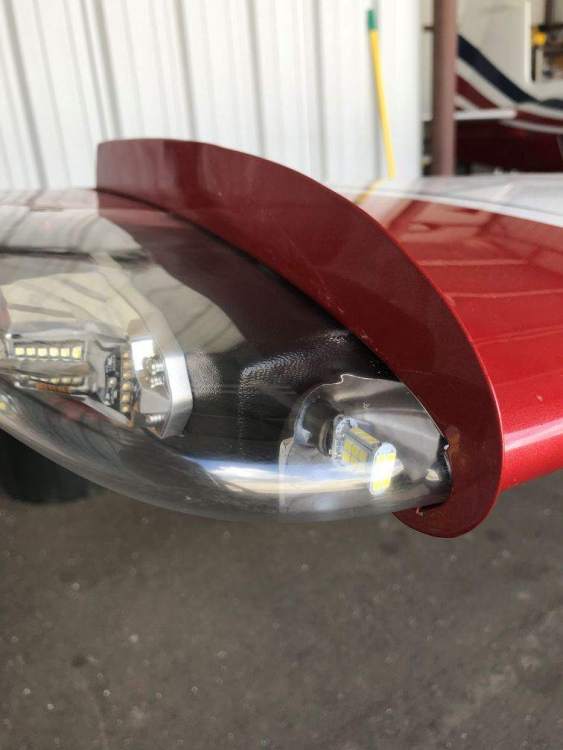
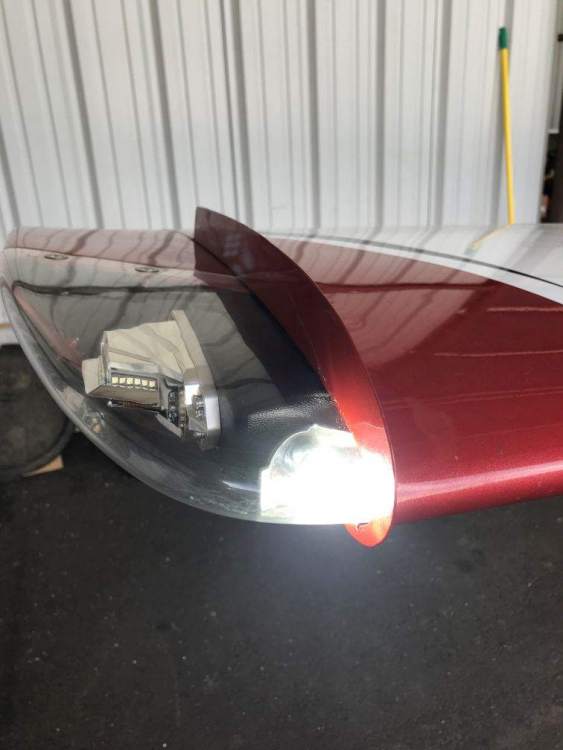



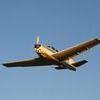

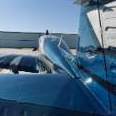
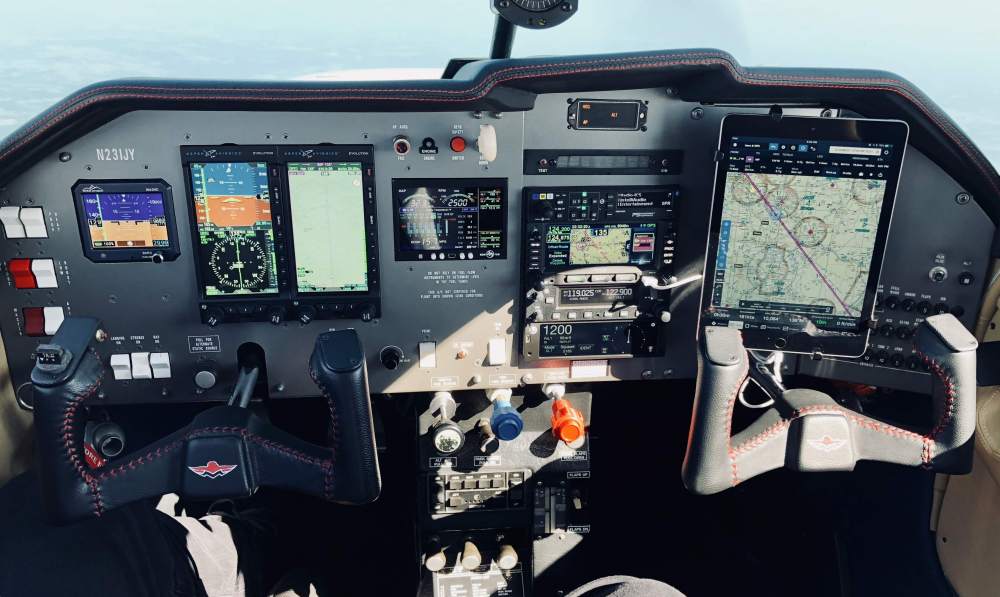




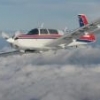

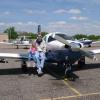

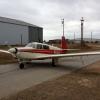
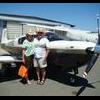
.thumb.png.7c67574d7b28f67b0b4a17760919b1ac.png)

